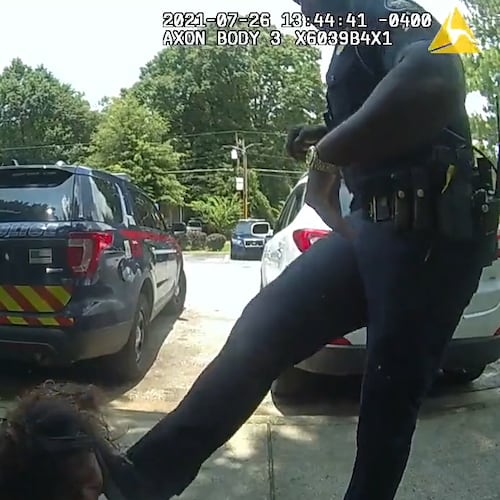More than 100 Berkeley Lake residents packed a town hall meeting Saturday morning for an update on the city's deteriorating dam and the ongoing feud with FEMA over a city-estimated $4 million repair bill.
For more than three hours, residents listened to presentations by engineers at Lake Berkeley Chapel before peppering them with questions about the 85-foot-tall dam, which sustained a 32-foot-long slope failure in September's floods. Earlier this week, engineers found another crack four times that size.
On Saturday, residents asked about the mechanics of the repairs, alternative funding sources and additional expert opinions on the cost and the scope of the work.
But most questions centered on when the 88-acre lake would reach full pool again. At the urging of the state's Safe Dams Program, the city lowered the lake 10 feet in September to reduce pressure on the dam.
"I have four boys," resident Eric Musser said. "They're looking at the lake and asking, ‘When's it going to fill up?'"
That was echoed by other residents, some of whom fear the reduced lake will diminish property values.
"I'm sick and tired of all these charades," fumed resident Dick Lillie. "All we've got is a slippage problem."
The city sees it as more than that. For weeks, the Gwinnett County municipality of 2,000 and the Federal Emergency Management Agency have locked horns over the extent of storm-related damage. The city contends that flooding not only caused the slope failure but also battered the internal drain system, which collects water and pipes it away. FEMA sees that system, installed during a 1980 upgrade, as a "pre-existing condition."
As it stands, FEMA is willing to pony up about $1 million. The city believes the cost is four times that amount.
"They [FEMA] were clear from the beginning that money wasn't the issue," Mayor Lois Salter told residents. "They were concerned about scope of work. They were fine with the scope until they found out the cost."
FEMA representatives were invited to the meeting but declined to attend, the mayor said.
To pay for the work, Salter said, the city has applied for federal earmarks, and it is exploring state funding and a bond referendum.
City engineer Rich Edinger said the best-case scenario for returning the lake to full pool would be late 2012 or mid-2013.
About the Author
The Latest
Featured
